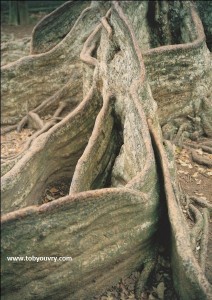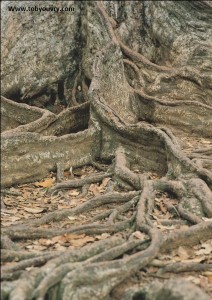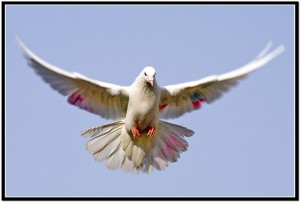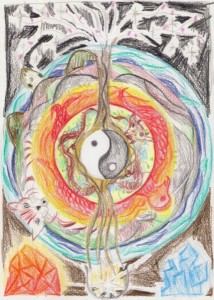 As witnessed in a recent article in the “American Psychologist Journal” by transpersonal psychologist Roger Walsh there are eight “lifestyle therapies” that have been proven by scientific research to have a positive effect on our mental wellness. The slightly scary thing is that, in the same article Walsh observes that currently less than 10% of mental healthcare professionals (in America) are actually recommending these lifestyle therapies to clients, and are relying all too heavily on the prescription of psychiatric drugs for mental health problems such as depression. These lifestyle therapies are FREE, have no unpleasant side effects, and the list of them below offers a “go to” set of strategies that you can employ for your own mental wellness, and also recommend to friends and family experiencing mental stress and unhappiness.
As witnessed in a recent article in the “American Psychologist Journal” by transpersonal psychologist Roger Walsh there are eight “lifestyle therapies” that have been proven by scientific research to have a positive effect on our mental wellness. The slightly scary thing is that, in the same article Walsh observes that currently less than 10% of mental healthcare professionals (in America) are actually recommending these lifestyle therapies to clients, and are relying all too heavily on the prescription of psychiatric drugs for mental health problems such as depression. These lifestyle therapies are FREE, have no unpleasant side effects, and the list of them below offers a “go to” set of strategies that you can employ for your own mental wellness, and also recommend to friends and family experiencing mental stress and unhappiness.
Here is the list:
1. Exercise – Psychotherapy has been shown to be positively effective for approximately two thirds of people experiencing mental problems, with the same success rate for psychiatric intervention (ie: drugs). What is the activity that has been shown to have an almost 100% success rate on improving mental health? No, not electric shock treatment, EXERCISE! Enough said, find a sport or exercise form that you enjoy and engage in it regularly! We have so many options these days, weights ping pong, brisk walking, belly dancing, do something.
Another thing that the benefits of exercise highlight is that an excessively sedentary lifestyle gets you down.
2. Nutrition and Supplements – Ok, huge area, two things that research has shown to have the most positive effect on mental health: Avoiding excessive calorie intake and eating a diet with multi-coloured fruits and vegetables. The supplement that has been shown to be most effective for mental wellness is fish oil. I’m a vegetarian, but this is what the research shows so I’m putting it in. Anyway, the basic thing is that “You are what you eat” is an expression that holds true mentally as well as physically!
3. Time in Nature – Nature has been a source of healing and inspiration for humans for Milena. How much time have you spent in nature recently? If the answer is not much then there is a very good chance your lack of exposure to it and your over exposure to artificial environments is contributing to your mental stress. What has been obvious to generations of humans has now been proven beyond doubt by the science. Go hug a tree, dance barefoot on the lawn and swim naked in the sea. Or y’know at least go for a regular walk in the park…
4. Relationships and the Acquisition of Friends – Feeling mentally out of balance can often cause us to recede into our shells and shun contact with people. Cultivating good friends and supportive relationships is fundamental to most people’s inner balance and mental health. Learning to leverage positively on your relationships in an appropriate way is a mental wellness life-skill not to be neglected!
5. Recreation and Enjoyable Activities – Yes, having fun regularly is good for your mental health and happiness, now proven by science, so go have some!
6. Relaxation and Stress Management – Activities include meditation, Qi Gong, Tai Qi, Yoga, progressive muscle relaxation techniques, visualization and hypnotherapy. Currently under utilized by many, but gradually becoming main stream.
7. Religious and Spiritual Involvement – Big area with a lot to consider, but basically some form of spiritual community and support for your inner wellbeing has been shown to have very positive effects on mental health. If you are like me and have no local church or temple that really resonates deeply, at least you can make the effort to keep active contact with people of a spiritually like mind virtually and when possible in person.
8. Contribution and Service – Giving happiness to others has a definite and undoubted effect on the sense of meaning, inner fulfillment and happiness of the person giving.
A Special Shout Out For Meditation!
Here is a quote from Roger Walsh directly from the above mentioned article: “In addition to its benefits for relaxation and stress management, meditation may also enhance measures of psychological capacities, health, and maturity in both patients and nonpatients (Walsh & Shapiro, 2006). Particularly important to health care professionals are findings that meditation can enhance valued caregiver qualities such as empathy, sensitivity, emotional stability, and psychological maturity while reducing distress and burnout (Shapiro & Carlson, 2009). On the cognitive side, studies suggest that meditation can enhance some measures of cognition and may reduce age-related cognitive losses and corresponding brain shrinkage (Pagnoni & Cekic, 2007; Xiong & Doraiswamy, 2009).”
A final point from me here, most of the research on meditation to date have been short term studies on relative beginners. I feel pretty certain that when the results of longer term research is done on more advanced practitioners there will be many more remarkable additional benefits to meditation that will come to light!
Starting to Make Practical Use of the Above List:
As mentioned, each of these eight “lifestyle therapies” now has a large body of scientific research behind it indicating that it is of real and tangible benefit to mental health and well being. Again for a fuller breakdown of the actual research please refer to the article by Roger Walsh.
For Yourself:
Go through the above list and with each of the lifestyle therapies simply ask yourself “How well am I leveraging on this activity at the moment?” In the areas that you feel you have been neglecting, write down a couple of things that you can do over the next week or so to start re-integrating them into your life in an effective way.
For Other People:
When you have a friend or family member under mental duress, the above list is a useful one to bear in mind, as you will almost always be able to suggest one or more of them as a way of helping them to deal with their challenge more effectively. The good thing about this list is that (with the exception of number 7) it is totally non-denominational and complex-philosophy free. From your teenage daughter or son, to your partner to your Mum or Dad, this list is going to be easy for them to understand and implement!
© Toby Ouvry 2011, you are welcome to use or share this article, but please cite Toby as the source and include reference to his website www.tobyouvry.com







